CPR - RMS
Empress of Ireland
1906 to 1914
Please Note: Firefox and some other search engines are
not suitable – Use “Internet Explorer” for this page to load perfectly!

Click
the logo above to reach the ssMaritime FrontPage for News Updates &
“Ship of the Month”
With Reuben
Goossens
Maritime
Historian, Cruise‘n’Ship Reviewer & Author
Please
Note: All ssMaritime and other related maritime/cruise sites are 100%
non-commercial and privately owned. Be assured that I am NOT associated with any
shipping or cruise companies or any travel/cruise agencies or any other
organisations! Although the author has been in the passenger shipping industry
since 1960, although is now retired but having completed over 690 Classic Liners and Cargo-Passengers Ships features I
trust these will continue to provide classic ship enthusiasts the
information the are seeking, but above all a great deal of pleasure!
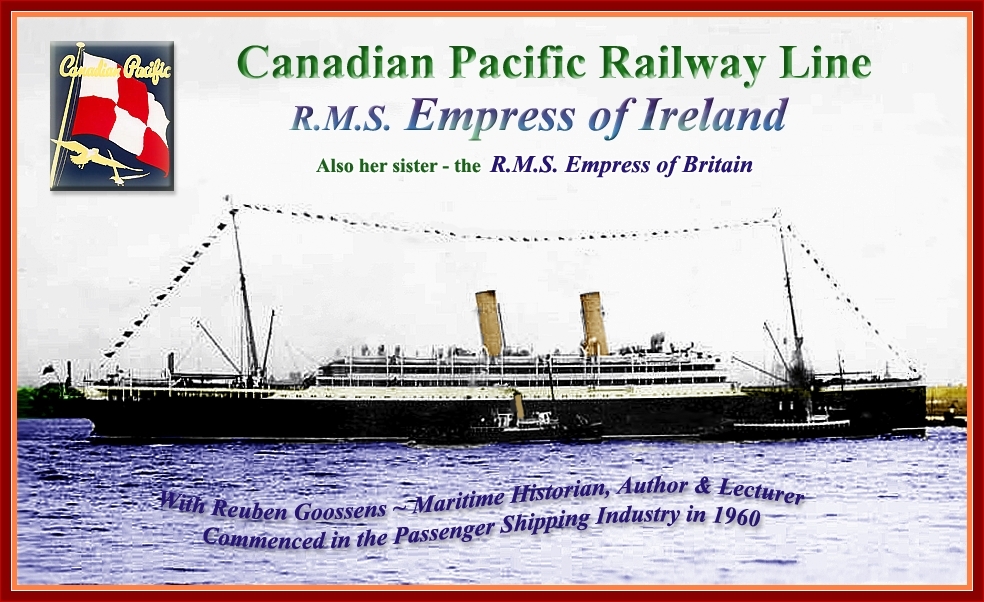
Page One – History
Page 1906 to 1913
There will be Two Pages and this
first page will cover her first seven years, which includes her planning,
construction as well as that of her one month younger sister the Empress of Britain.
Whilst Page Two, will cover her final four
months and twenty eight days and her final two hours and twelve minutes when
she had slipped under the water of the St. Lawrence River.
We hear so much about the Titanic, but so many simply do not realise that more
passengers died during this great tragedy, than on the Titanic, for sadly, the
loss of the Empress his very much the forgotten disaster! I am well aware that
she was not coined the unsinkable ship, which the Titanic never was, and the
White Star Line never ever made such a statement, but was a media beat up! It
was just that she the second of a trio of identical ships built had that great
tragedy whilst on her maiden voyage, and due to company stupidity, she did not
have sufficient lifeboats and she was forced to remain to stay at high speeds
in dangerous water where Ice had been reported!
On the other hand the Empress of Ireland was
one of the safest ships built in her day having been given the highest Lloyds
safety classification possible, but she went down because of a wayward collier
crashed into the liner’s starboard side! But there will be so much more
on Page Two.
Introduction to Two Fine CPR Liners:
The
1906 built RMS Empress of Ireland
was without a doubt a stately looking two funnelled ship that was a
well-appointed ocean liner built for the Canadian Pacific Railway Line (CPR).
She, together with her with her identical sister the Empress of Britain, which
was built at the very same time and she departed a month earlier on her maiden
voyage from Liverpool to Quebec.
This is the story of this beautiful ship, the Empress of Ireland from her
construction to her those final tragic 14 Minutes that took her to the bottom
of the St Lawrence River after a wayward
Collier crashed into her.
However, the Empress of Britain that was built
in Yard 442, and launched on November 11, 1905 and departed on her maiden
voyage on May 2 1906, sailed on and had a good long life. In 1924 during a
refit she was converted to oil-firing, she then operated the Canada to Antwerp
service until 1929 she was sadly finally laid up and was sold to
“Stavanger Ship breaking Co.,” on June 17, 1930.

The
RMS Empress of Britain
departed Liverpool for Quebec
on May 5, 1906
In
1924 she was converted to oil-firing and renamed TSS Montroyal
RMS
Empress of Ireland:
It had become quite obvious to Canadian Pacific
Railways (CPR) that the completion was ever increasing against their aging
Empress liners.
The Empress of Ireland was designed by Francis Elgar and she was ordered in 1904 to be
built by Fairfield Shipbuilding & Engineering Co., at Govan in Glasgow,
Scotland. The 14,191 GRT
(Gross Registered Ton) ship was contracted at a fixed price of £375,000 and she
was to be delivered to CPR 18 months from the date the contract was signed.
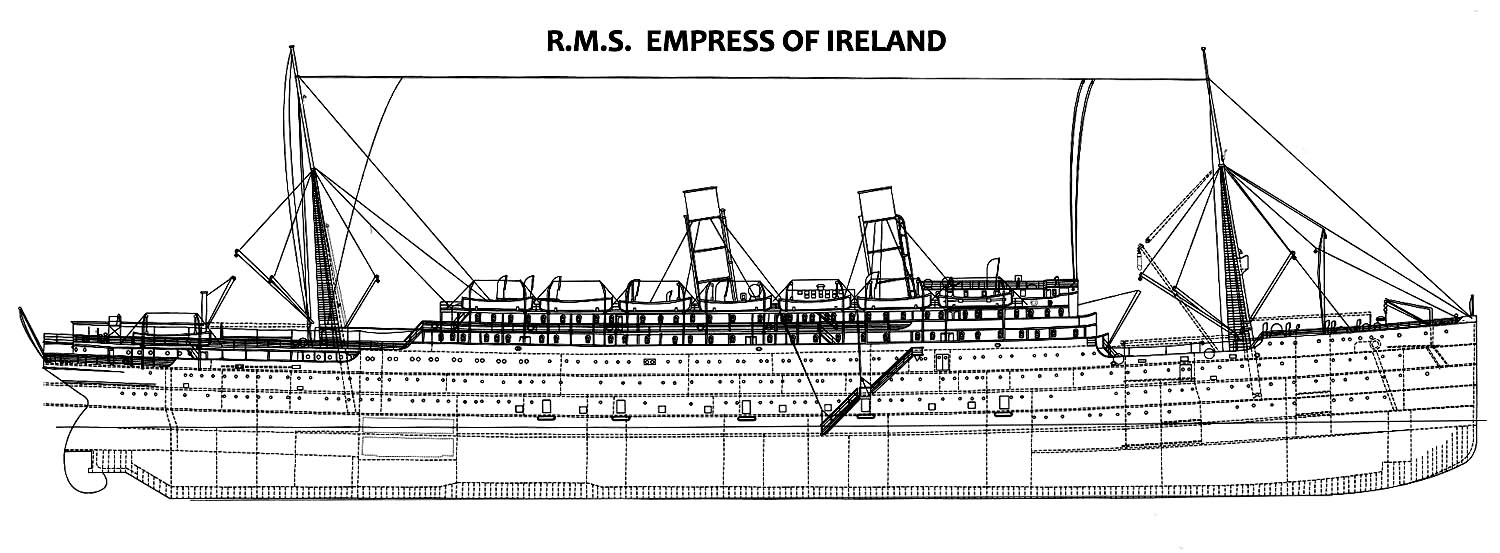
An
excellent starboard line drawing of the two stately looking - ‘Empress of
Britain’ & ‘Ireland’
Please Note:
A larger size can be viewed by clicking on the above image
Thank
you Dr. David Edelstein, Canada
for providing same!
She
and her sister were the biggest ships that Fairfield Shipbuilding had ever
built up to that time and they were constructed to such a high standard up to
Class Star 100A1 at Lloyd’s. What this really meant is that the ships had
not just ben approved after completion but they would have been scrutinised and
endorsed by the Lloyd’s surveyors at every single stage that is from the
drawing-board to her sea trials. This was without a doubt the highest seal of
approval that the world’s most prestigious maritime surveyors could
bestow on a pair of new builds!
The ship built in Yard number 443
was officially named by Mrs.
Alexander Gracie “Empress of Ireland” and
was duly launched by her on January 27, 1906. Once in the water she was towed
to her fit-out berth and once the ship was completed she underwent her sea
trials with great success as she managed a good 20.8 knots and she was then
delivered on June 5, 1906.
As the Empress of Ireland was about to depart
for her maiden voyage from Liverpool to Quebec Canada on June 29, she proved to
be an inspiring and an imposing sight, for she stood high as a four-story
building above the waterline. Many were amazed to learn that she was as long as
two football fields and almost 66 wide much like today’s four-lane
highway.
The Empress of Ireland at first sight was a
handsome ship, built so typically in the style of grand ships of her time, but
she and her sister broke the mould and did away with the third dummy funnel and
thus having a more streamlined look. Her beautiful traditional straight Stem
combined with her sweeping counter Stern were wonderful, this and her two tall
raking buff funnels and high raking masts to match.
The Empress of Ireland was a monument to
Edwardian splendour. The First Class accommodations included a fine Library
stocked countless books, a Café, a Music Room, and a Smoking Room. The Dining Room
featured fine leather upholstery, handmade woodwork, beautifully sculpted ceilings,
cut-glass fixtures, and an atrium that rose up two levels to the Music Room.
The two Empresses were 570ft. long and 65.72ft
and had quadruple expansion steam engines geared to twin screws giving them a
service speed of 18 knots with a maximum of over 20 knots. She accommodated 310
First-Class passengers, 468 Second-Class, 494 Third-Class and 270 Steerage with
a crew of 373.
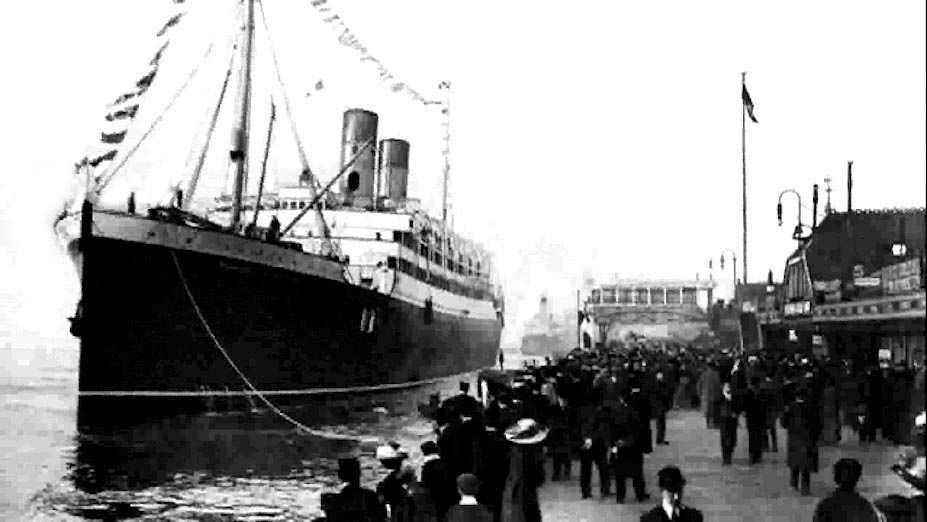
Departure
day
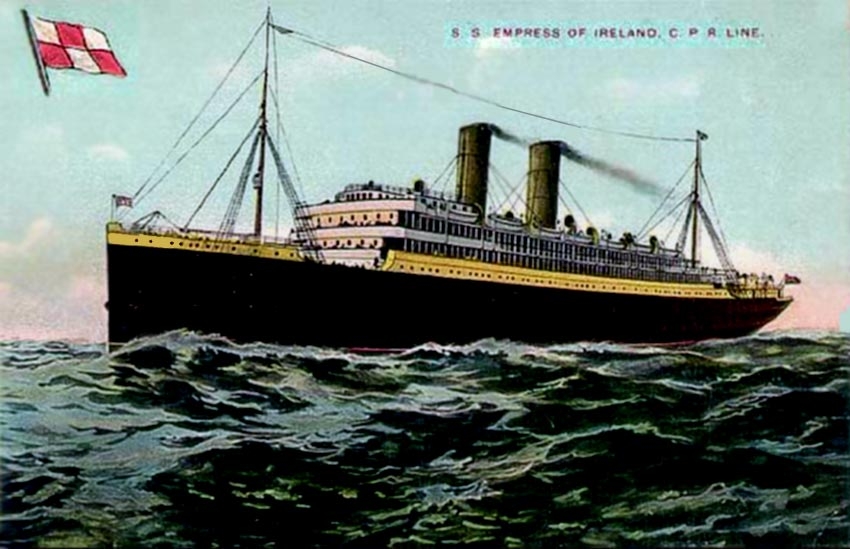
A
company colourised postcard of the RMS Empress of Ireland from her early days
This
fine ship departed England
for her first Trans-Atlantic voyage to Canada
and sailed at a good speed up to 20 knots, thus she made the journey from
Liverpool to Quebec
on a regular basis in 6 days. Only four days of the voyage was in the open
waters of the North Atlantic and CPR made a
great fuss about this in their promotional material and advertising! For two
days would be spent sailing along the peaceful waters of the St. Lawrence River
to Quebec,
being a great scenic waterway! It was well known that the North
Atlantic had a formidable reputation and could be rough at any
time of the year. But, it soon became apparent that the Empresses became known
as being solid and steady ships having a reputation for great comfort and
having excellent safety features thus their popularity increased and CPR sales
sky-rocked!
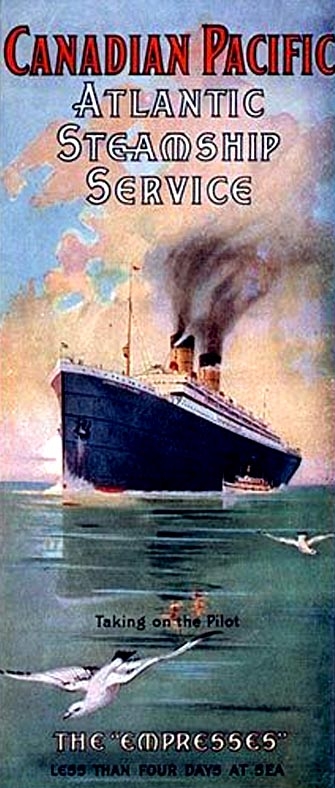
An
item of advertising promoting that the Empresses were “LESS THAN FOUR
DAYS AT SEA”
First Class
passengers were accommodated amidships on the Upper and Promenade Decks, where
they would be close to fresh air and light. Second Class passengers were
berthed aft on Main and Upper Decks. Whereas
Third Class was located low in the ship from the Bridge heading
forward to the fo’c’sle, surrounded, if
not intermingled by crew quarters. Other crew, including stewards and engine
staff had their cabins far aft deep down in the ship. However the ships
officers by contrast enjoyed the good life way up with the very best of
locations up in the Deck house up on Boat Deck, according to tradition, thus
close to the Bridge. The Captains Cabin and dayroom was connected the Bridge
for convenience, and that he would always be within a few steps from his
command day and night!
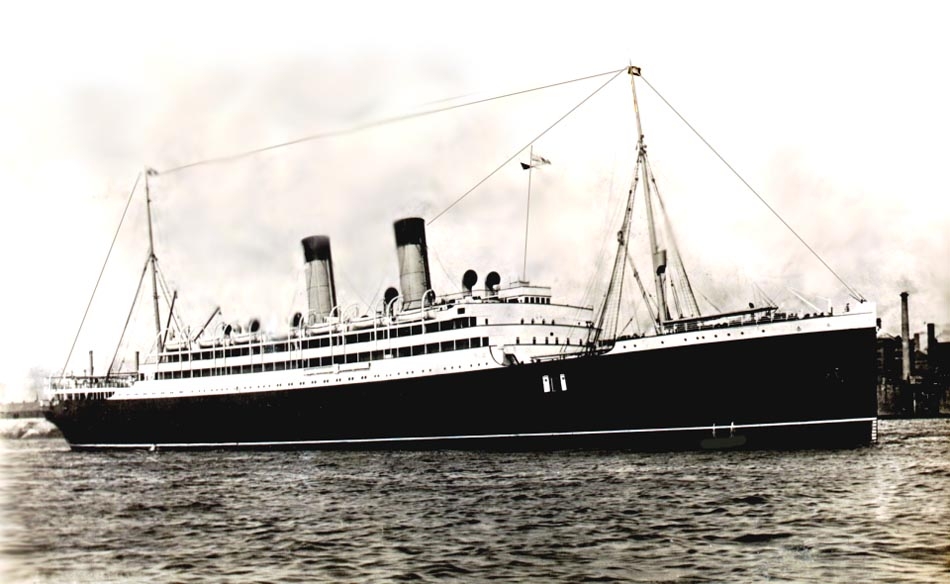
A
true elegant and Classic Looking Trans-Atlantic Liner
She
is seen with her freshly painted black funnel tops
Empress of Ireland
Photo Album
First
Class passengers were accommodated amidships on the Upper and Promenade Decks,
where they would be close to fresh air and light. Second Class passengers were
berthed aft on Main and Upper Decks. Whereas
Third Class was located low in the ship from the Bridge heading
forward to the fo’c’sle, being partially surrounded if not next to
the crew quarters. Other crew, including stewards and engine staff had their
cabins far aft deep down in the ship. However the ships officers by contrast
enjoyed the good life way up with the very best of locations up in the Deck
house up on Boat Deck, according to tradition, thus close to the Bridge. The
Captains Cabin and dayroom was connected the Bridge for convenience, and that
he would always be within a few steps from his command day and night!
For entertainment there was a five piece
string Orchestra that played daily for both First and Second Class passengers
in the Dining Room and the Lounge. Children had their own playroom and a
sandpit and also a separate Dining Room. The Third Class Dining Room was large
and quite well appointed, whilst Steerage dined on simple long wooden tables
mostly without tablecloths, except for special nights and they sat on long hard
wooden benches in and area that seemed to be nothing more that an open space
between their large dormitories and the crew quarters. Steerage obviously had
the worst of the accommodations.
Third Class passengers did not expect to be
provided with any entertainment but they did receive more than adequate food
and suitable berthing that would be appropriate to their meagre recourses. Yet
it was those passengers who desired as well as the migrants who in fact became
huge money makers for all the major shipping companies in due course, for
without them most would have gone broke very quickly!
I am pleased that I have some reasonable
photographs of First Class, three for Second, but just one and a Menu for
Third. Should more come available I will place hem online of cours.
First Class
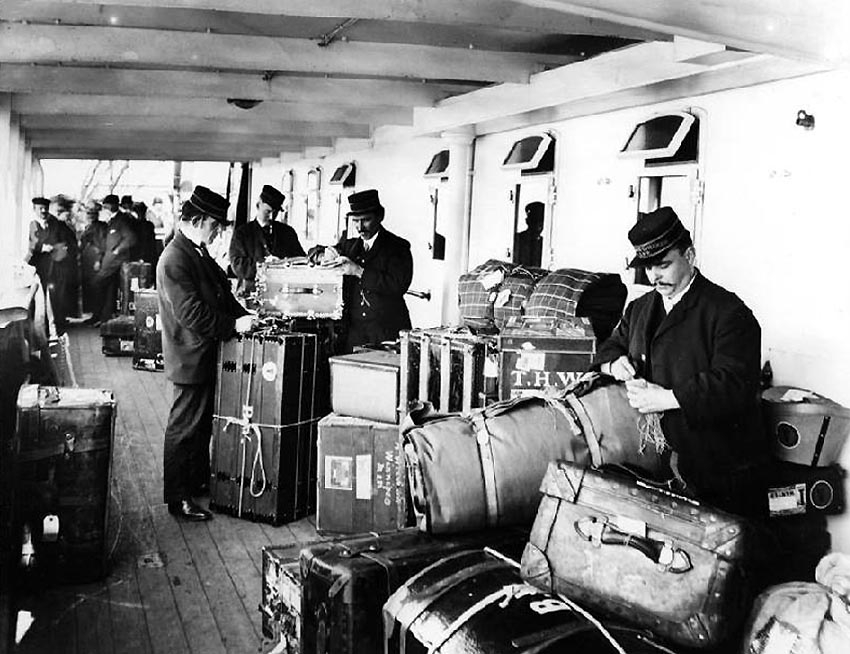
Baggage
is being sorted to be delivered to Suites and cabins on Promenade Deck

The
Main Entrance Hall, Lobby and grand stairwell
First
Class accommodations included a fine Library, which stocked 650 volumes there
was also an elegant Italian café, the Music Room, and a Smoking Room. The
Dining Room was rather Grandiose and it featured leather upholstery, handmade
woodwork, sculpted ceilings, cut-glass fixtures, and an Atrium that rose up two
levels to the Music Room. Each level
features the most beautiful wrought iron balustrades topped with highly
polished timber.
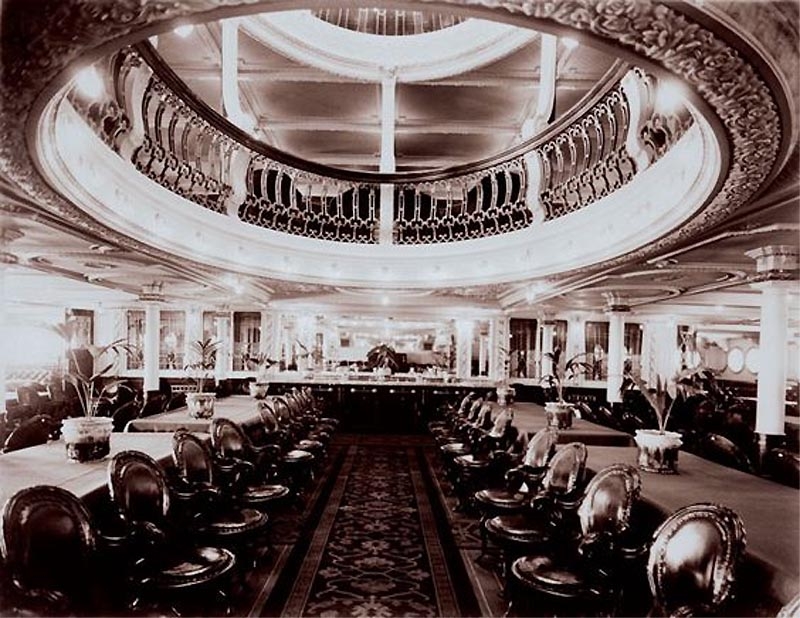
Above
& below: The Magnificent Dining Room that is three
level, high and topped with a grand glass dome
Below
we can see the cosy bench style seating along the sides on the dining room with
the extra large portholes
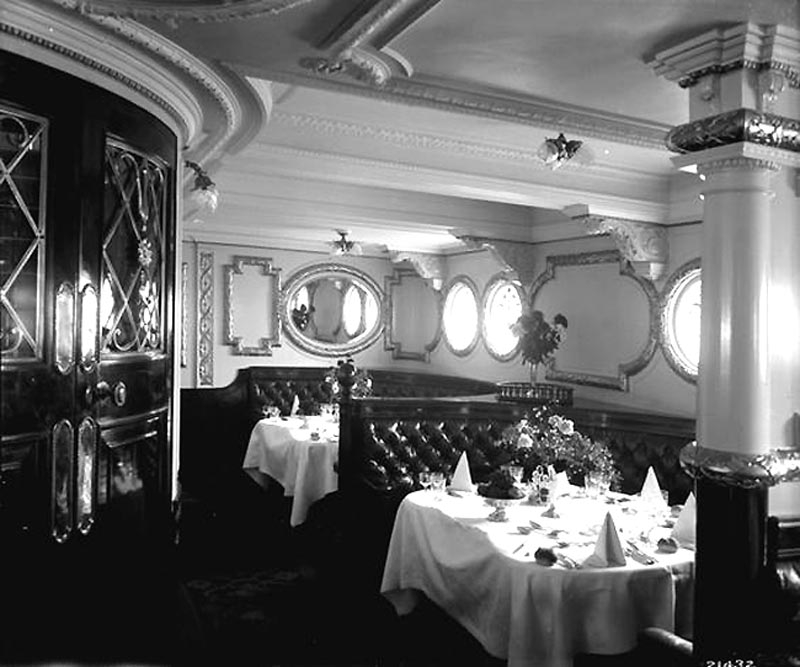
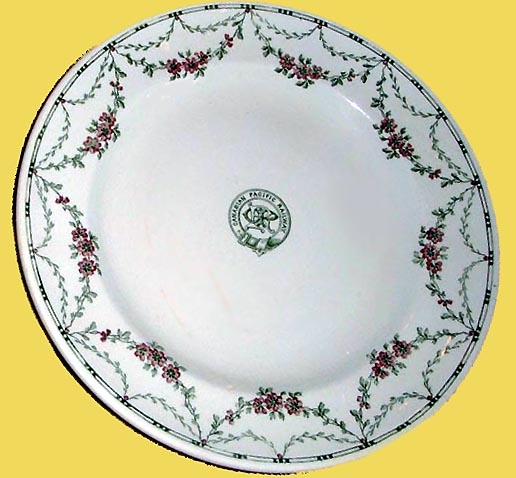
This
is direct from the dining room a magnificent “Minton Fonterey
Pattern” plate from the ship
A
single set was given to a passenger on the 95th.voyage,
being two voyages before the disaster
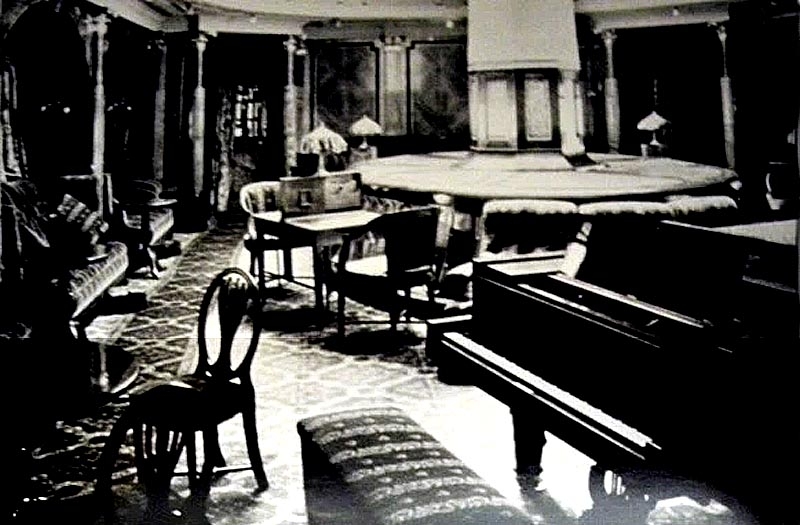
The
Main Lounge
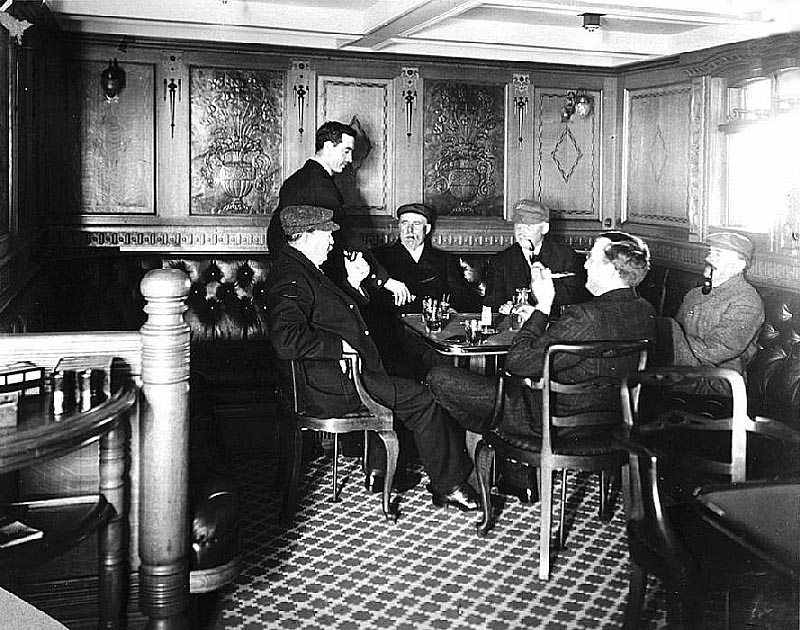
Gentlemen having an afternoon chat I the Smoking Room
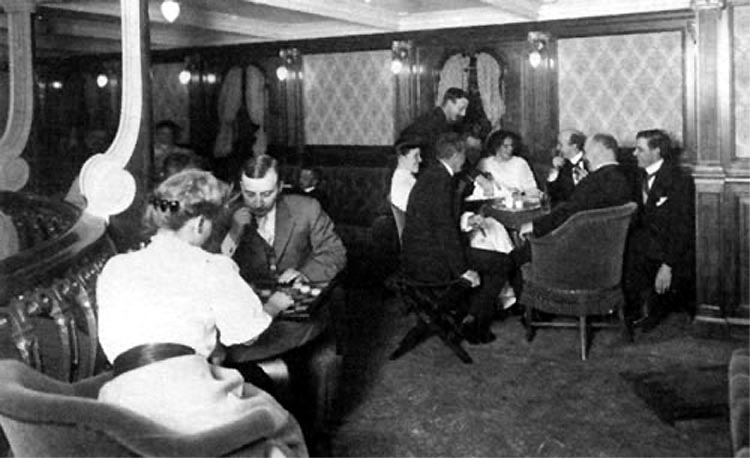
This is an excellent photo of the
very popular Italian Café, frequented day and after dinner as per this photo

Reading
and writing Room
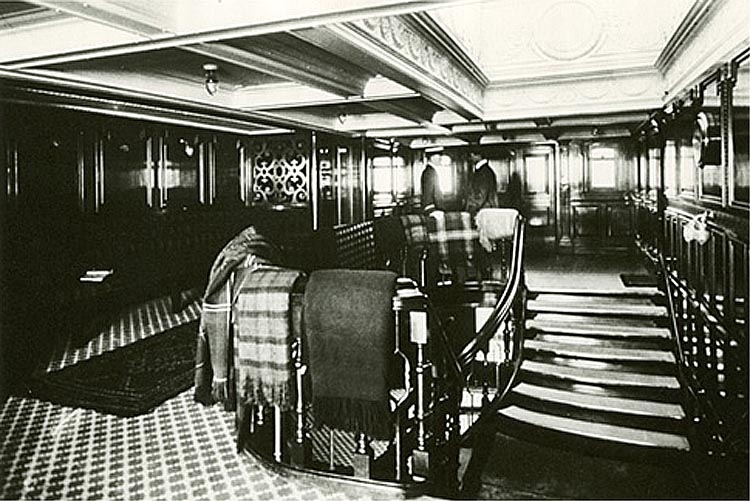
Another
interior view
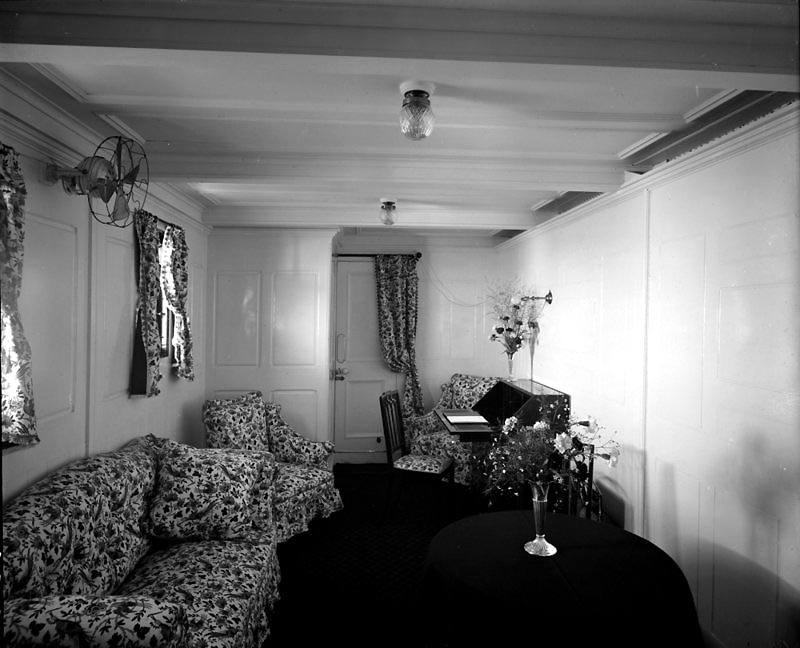
A
Deluxe Suite; this is its sitting room, where there is also the Main Bedroom as
well as maid’s cabin
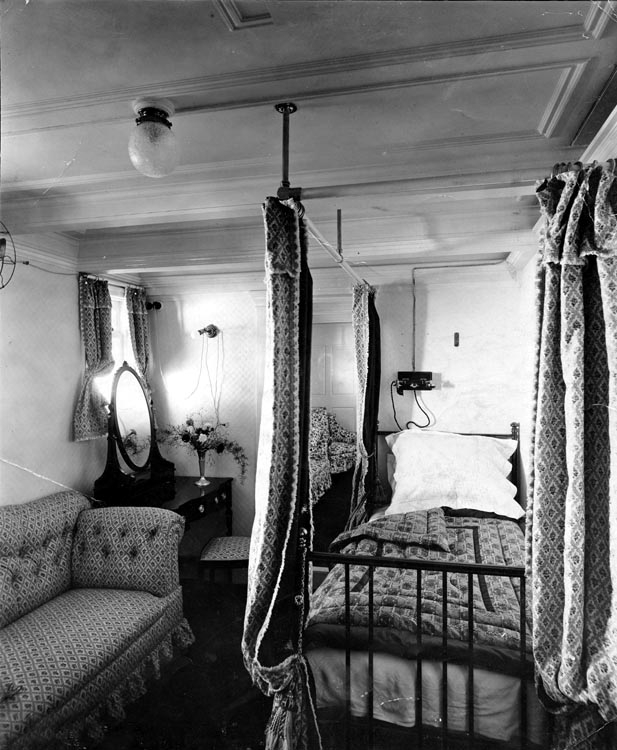
A
comfortable single bed cabin with a sofa
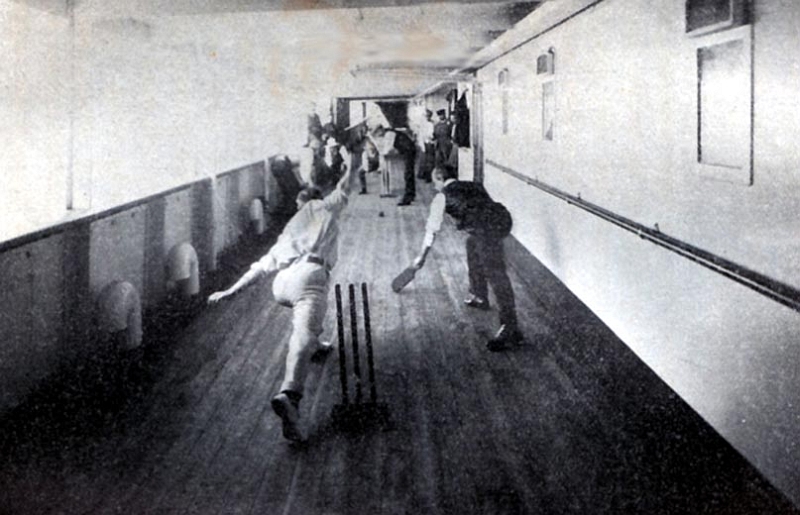
A
game of Cricket is plated on Promenade Deck, I wonder
how many cricket balls went into the sea?
Second Class
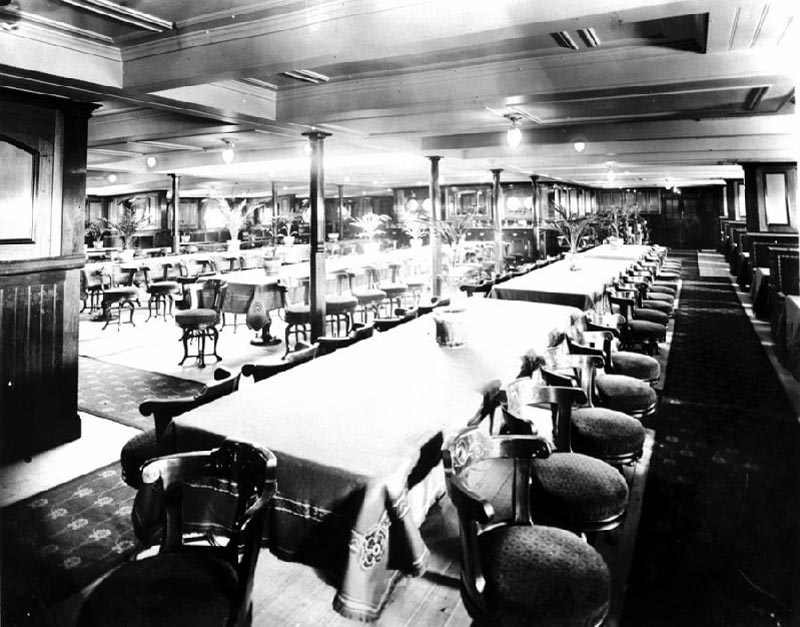
A
very comfortable and a most pleasant Dining Room
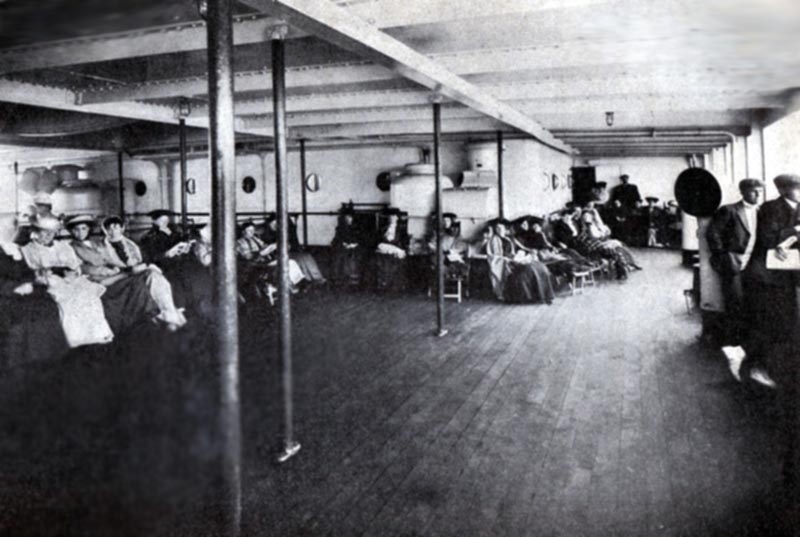
Passengers relaxing on their aft
located Promenade Deck
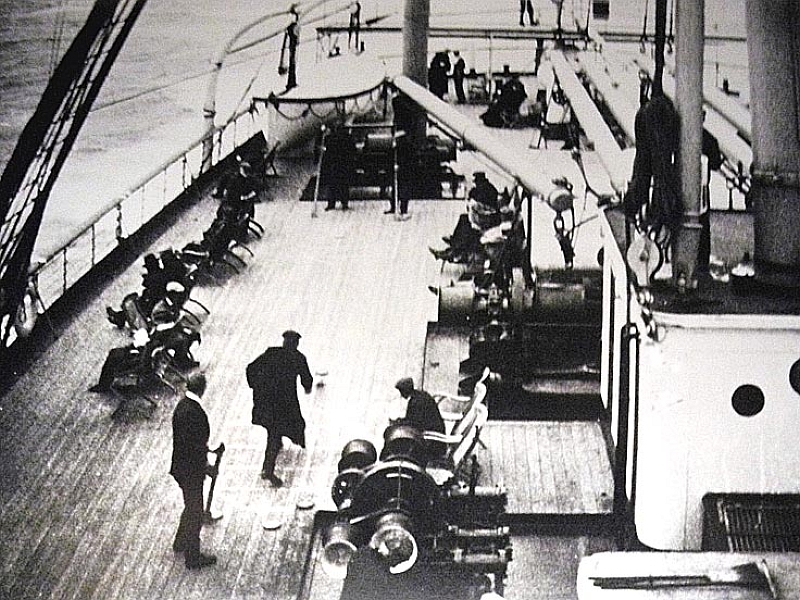
Shuffleboard was always a popular
game at sea
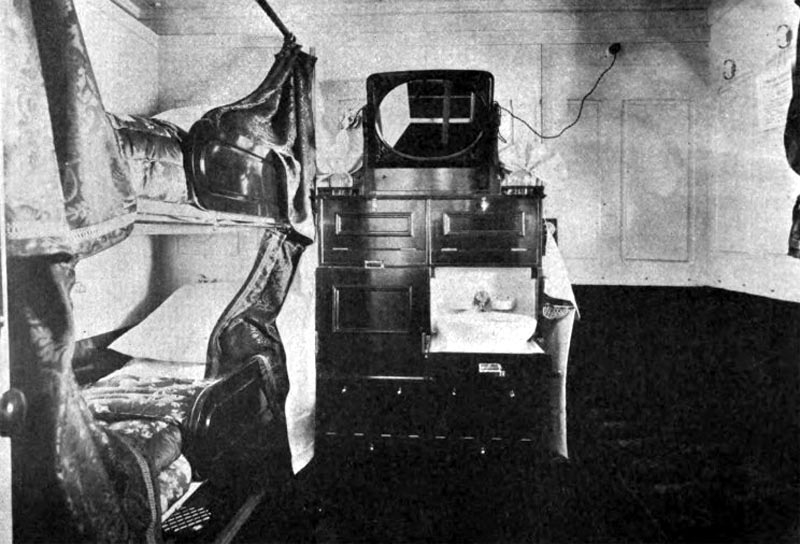
A
two berth cabin, which is comfortable and well equipped
I
am sorry, but this was the best image I was able to locate
Third Class
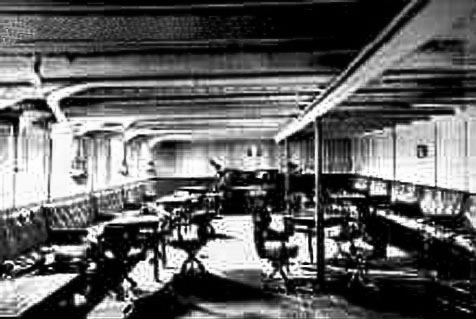
The
Main Lounge is as you can see is far forward in the bow section
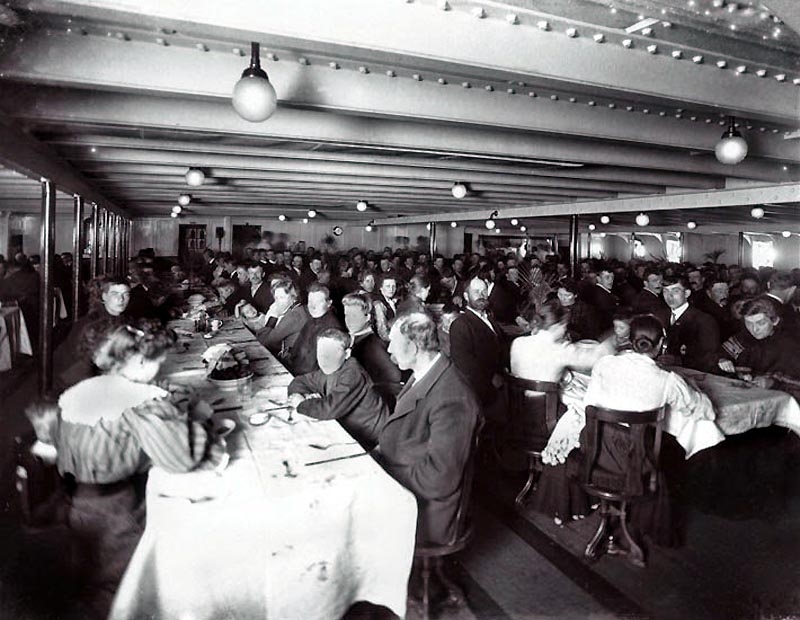
The Third Class Dining Room had
long tables and fixed timber chairs, but above exposed
steel was to be seen, but the venue was
far from being unpleasant
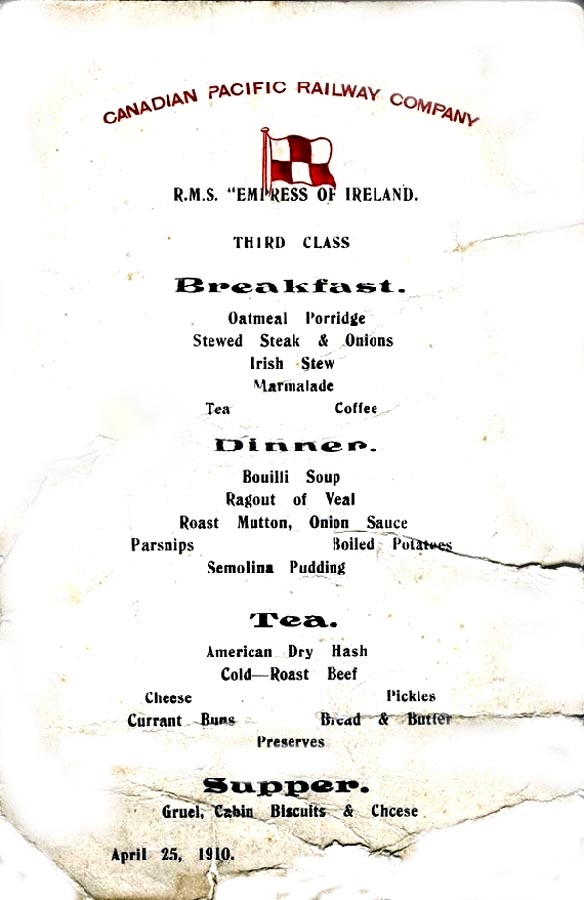
Here is a Breakfast Menu for the
morning of April 25, 1910
The Galley and the Bridge
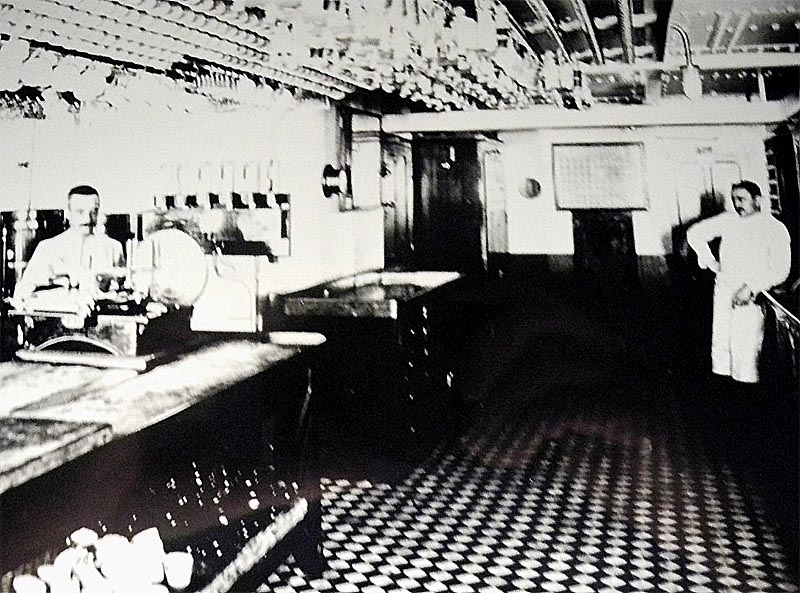
This
is the First Class Pantry that leads into the main Galley
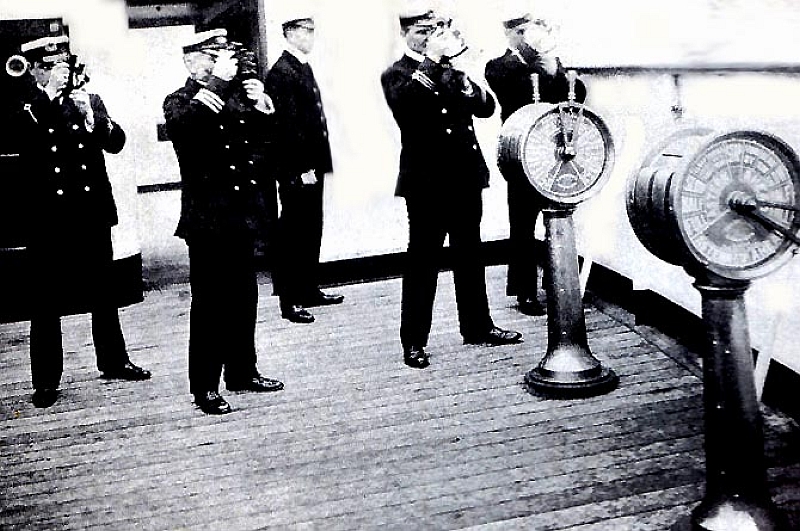
The Captain and his Officers seen
on the starboard Bridge wing using their sextants
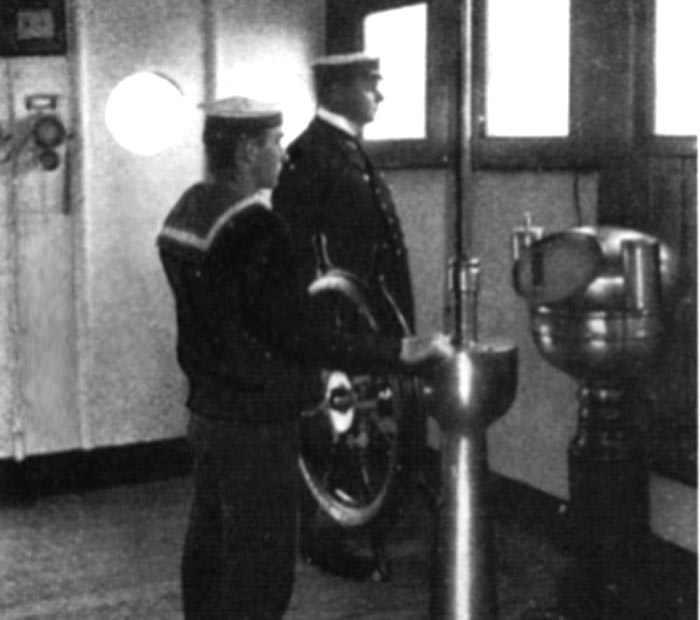
The
Bridge with a helmsman and a duty
Officer at hand whilst at sea
All
the officers and the Captain ere accommodated close by
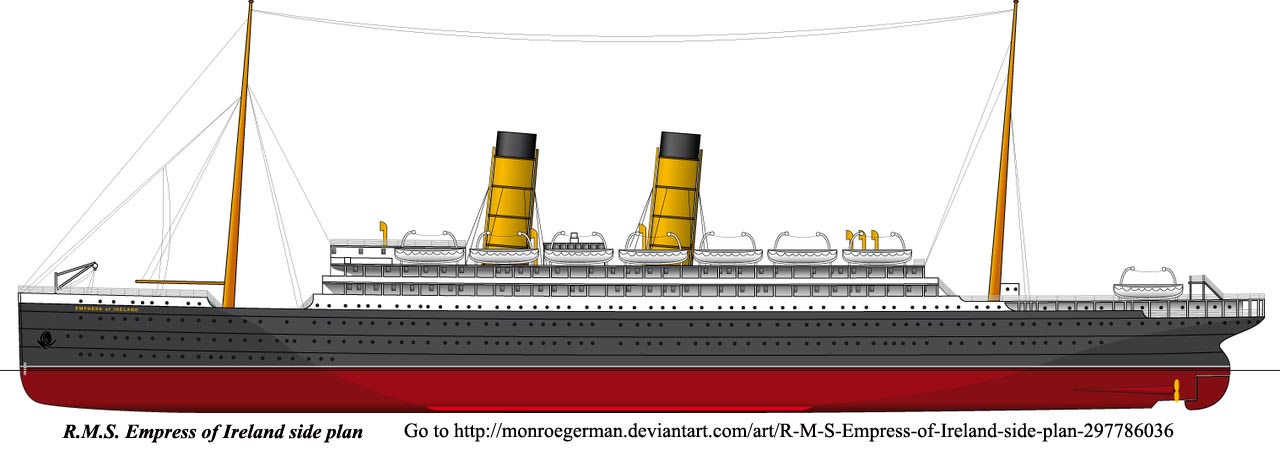
An
excellent model of the Empress of Ireland they have other models available
In Conclusion of Part One:
As the years passed it had become obvious that
the two new CPR Empresses had become the Hallmarks of Canadian Pacific Shipping
system on both sides of the Atlantic, for they were two of the larger liners in
operation between Quebec and Liverpool!
The offered excellent accommodations in both First and Second Classes and
Third/Steerage offered the basics for those who travelled on an economy or as
migrant to Canada from
Europe and Britain.
But sadly the memory of the Empress of Ireland
will be one more remembered because of what occurred after she departed late
afternoon on Thursday 28 May, 1914 and then just a little over an hour past
midnight a wayward collier the SS Storstad crashed into her starboard mid
section into the aft Boiler room and she sank rapidly. Yet she was one of the
safest ships ever built, with sufficient lifeboats for every soul onboard, but
she went down within 14 minutes!
Page Two contains the full Story entitled: “Empress
of Ireland
- Her Last Voyage”
Specifications RMS Empress of Ireland:
Builder: Fairfield Shipbuilding & Engineering
Co., at Govan, Scotland
Yard: 442.
Launched
on: January 27, 1906.
Maiden Voyage: June 29.
Tonnage: 14,191 GRT, 8,028 NRT (Net Registered
Tons).
Length: 570ft - 170m.
Beam: 65.72ft - 19.995m.
Draught: 40ft - 12m.
Propulsion: Two × Quadruple
Expansion Steam Engines.
. by
the builders 19,000 IHP.
Screws: Two.
Speed: 18 knots, max 20.7 knots.
Passengers: 1,542;
310 First-Class, 468 Second-Class, 494 Third-Class and
270 Steerage.
Crew: 373, later increased
to over 500.
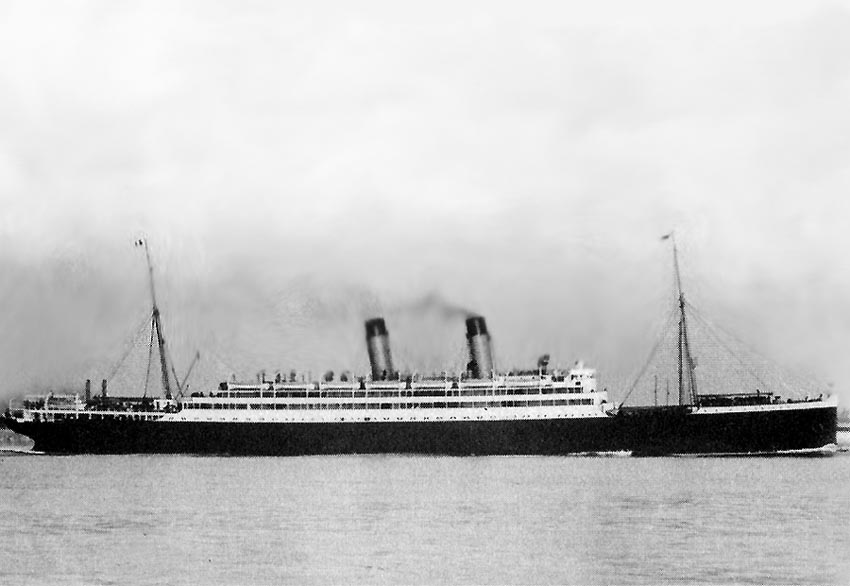
A
beautiful photograph of the RMS Empress of Ireland
departing Liverpool around 1912
Go to Page Two “Empress of Ireland - Her Final Voyage”
“Blue Water Liners sailing to the distant shores.
I watched them come, I watched them go and I watched them die.”
****************************
Visit
our ssMaritime Main INDEX
Where
you will discover well over 690 Classic Passenger & Passenger-Cargo Liners!
ssMaritime.com & ssMaritime.net
Where
the ships of the past make history
&
the 1914 built MV Doulos Story
Please
Note: ssmaritime and associated sites are 100%
non-commercial and the author seek’s no funding
or favours of any shape or form, never have and never will!
Photographs
on ssmaritime and associate pages are by the author or from the author’s
private collection. In addition there are some images that have been provided
by Shipping Companies and private photographers or collectors. Credit is given
to all contributors. However, there are some photographs provided to me without
details regarding the photographer/owner concerned. I hereby invite if owners
of these images would be so kind to make them-selves known to me (my email
address may be found on www.ssmaritime.com only), in
order that due credit may be given.
ssMaritime is
owned & © Copyright by Reuben Goossens - All Rights Reserved
































